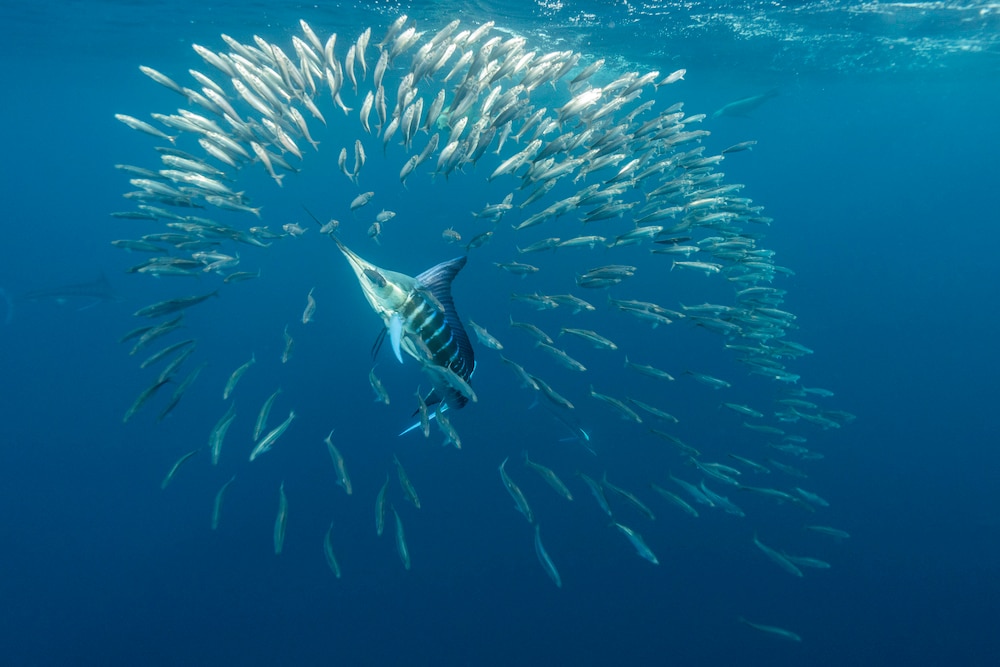Create a free profile to get unlimited access to exclusive videos, sweepstakes, and more!
Warmer temperatures supercharge ocean predators
Let the oceanic gluttony begin.

As much as we don’t want to find ourselves at the sharp end of a predatory animal, there’s no denying they have a certain allure. There’s something about watching ocean predators move sleekly through a seemingly endless watery world in search of their next victim. It’s so enthralling that tourists slap down hard-earned money to fly across the world, jump into a cage, and get dropped into the water next to a great white shark.
As ravenous as ocean predators are, it’s possible they’re about to get even hungrier as a result of global climate change. If new research is any indicator, when the environmental going gets tough, ocean predators start eating as if it’s their last meal.
We often think of climate change in terms of the ways it might impact humanity. Rising ocean temperatures will melt polar ice stores, causing sea levels to rise and causing changes to the water cycle. That will likely have a substantial impact on humans living both near the coast and further afield, but rising temperatures also change the way animals in the oceans interact with one another. Scientists from the Smithsonian, along with colleagues from around the world, cooked up a few experiments to test the ways predatory behaviors change in different ocean temperatures and published their results in the journal Science.
Previous research indicated a relationship between the levels of predation and the temperature of the water, revealing that predators in the tropics are more active and consume more prey animals than their counterparts in colder parts of the world. That research, however, didn’t take into account how the increased predation might impact prey populations, particularly as global ocean temperatures rise.
Scientists gathered data from 36 partner sites in the Atlantic and Pacific oceans, ranging as far north as Alaska and as far south as the tip of South America, covering a total of 115 degrees of latitude. To get a baseline of predatory activity, they dropped dried squid attached to stakes — lovingly referred to as squid pops — at different sites and left them to be eaten. After an hour, they went back to collect the remains, if any existed. Comparing the rate of consumption at different water temperatures confirmed that prey consumption was more intense in warmer waters, with predation ceasing almost entirely at temperatures below 69 Fahrenheit.
Changes in the global climate have shifted from one extreme to another countless times throughout the history of our planet but those natural cycles typically take thousands or tens of thousands of years to occur. Anthropogenic climate change is happening much more rapidly, over the course of just decades. That raises some concerns regarding the stability of ocean ecosystems with respect to increased predation.
As global water temperatures rise, larger regions of the world’s oceans will climb above a critical threshold in which predation shifts into overdrive. Fish and squid can at least swim for their lives when a predator shows up, but immobile prey animals which many predatory species feed on don’t have that luxury.
In another experiment involving live prey, scientists placed protective cages over populations of stationary invertebrates like sea squirts, and allowed them to colonize plastic panels for a few months. Later, they removed the cages from half of the populations, giving local predators access. Those populations which were unprotected were devoured by predators in warmer waters. Meanwhile, in colder regions there was little observable difference between colonies which were protected and ones which weren’t.
Taken together, the evidence suggests that top-down control of ecosystems increases as temperatures rise, something which is likely to continue happening in the coming decades. The increased predatory pressure at the top of the food web could have a significant impact on the overall food web, and that’s something which could be felt outside of the water as well. After all, prey populations aren’t infinite. Predators may enjoy a temporary smorgasbord, but the bubble has to burst sometime, and there’s no telling which species will make it through to the other side.


























